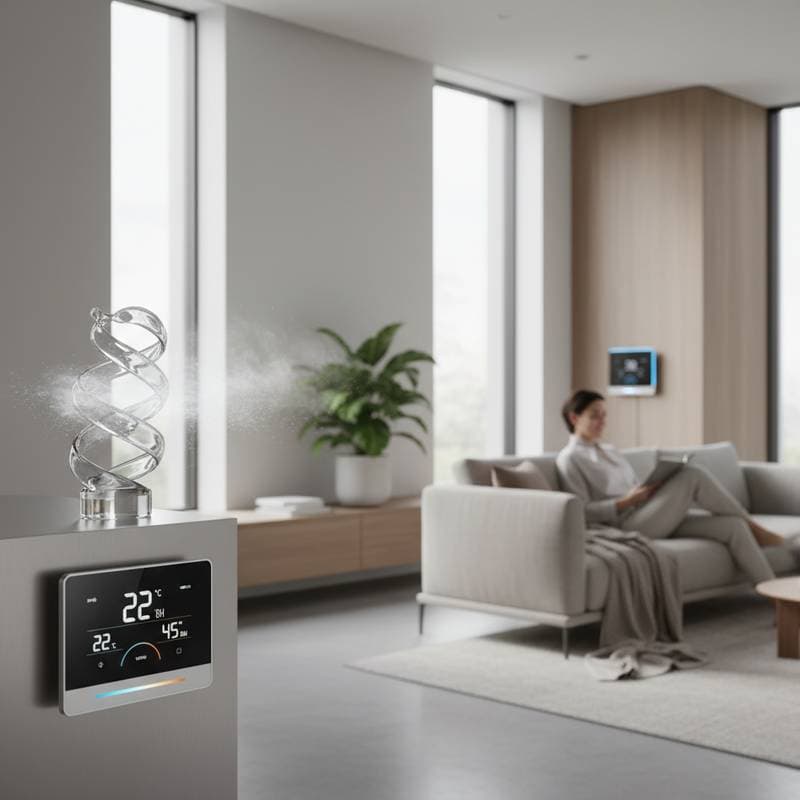Why Dual-Fuel HVAC Systems Lead Home Heating in 2025
As an HVAC professional, I have observed numerous homeowners confront recurring winter challenges: escalating heating expenses, volatile fuel prices, and equipment that fails to maintain reliability during temperature declines. Imagine entering a residence where heat distribution remains uniform, energy use stays optimized, and the setup responds dynamically to external weather variations. Dual-fuel heating systems deliver precisely this outcome by integrating electric and gas capabilities, resulting in a configuration that aligns with individual comfort requirements and regional climate patterns instantaneously.
The Evolving Dynamics of Residential Heating
In various areas, winter conditions now feature greater variability, including extended mild periods interrupted by abrupt freezes. Conventional heating methods frequently encounter difficulties in achieving both energy conservation and steady thermal regulation amid such fluctuations. Electric heat pumps diminish in performance during severe cold, whereas gas furnaces incur high operational expenses during temperate phases when their capacity exceeds necessity. Property owners seek more intelligent and adaptable alternatives, and dual-fuel HVAC systems fulfill this demand effectively.
A dual-fuel system combines an electric heat pump with a gas or propane furnace. The heat pump manages routine temperatures with high efficiency, while the furnace activates solely when external temperatures fall below the heat pump's optimal operating threshold. This approach yields reliable comfort alongside minimal resource consumption and reduced financial outlay without sacrificing performance.
Reasons Homeowners Transition to Dual-Fuel Configurations
Drawing from extensive field experience, I have witnessed dual-fuel installations reshape residential responses to variable weather. The system's automatic adjustment mechanism represents its primary strength. It selects the appropriate energy source according to prevailing outdoor conditions, thereby optimizing efficiency throughout daily operations.
Principal benefits encompass:
- Energy cost reductions: Numerous residents note decreases of 20 to 30 percent in heating expenditures following adoption of dual-fuel setups.
- Thermal consistency: Uniform heating eliminates the abrupt fluctuations typical of single-source systems.
- Ecological advantages: Diminished reliance on fossil fuels contributes to a reduced environmental impact.
- Equipment durability: Decreased operational stress on individual components prolongs the service life of the furnace and heat pump alike.
To illustrate energy savings, consider a typical 2,000-square-foot home in a temperate zone. During mild winters, the heat pump operates at a coefficient of performance exceeding 3.0, meaning it delivers three units of heat for each unit of electricity consumed. When temperatures drop below 30 degrees Fahrenheit, the furnace engages, utilizing natural gas at 95 percent AFUE efficiency. Over a season, this hybrid operation can halve total heating costs compared to a standalone gas system, especially with rising utility rates projected for 2025.
Strategies to Maximize Dual-Fuel System Performance
-
Ensure proper system sizing. An inadequately dimensioned heat pump or furnace undermines potential efficiency improvements. Engage a certified specialist to conduct a Manual J load calculation, which assesses your home's specific heating demands based on square footage, insulation quality, and window orientations.
-
Incorporate intelligent controls. Select a dual-fuel thermostat equipped with outdoor sensors. These devices monitor real-time data and execute seamless transitions between electric and gas modes, often integrating with home automation platforms for remote adjustments.
-
Maintain regular servicing. Perform annual professional tune-ups to inspect heat exchangers for soot buildup, verify refrigerant charges, and recalibrate temperature sensors. Such preventive measures can prevent efficiency losses of up to 15 percent over time.
-
Enhance home insulation. The most advanced HVAC equipment underperforms in structures with heat loss from unsealed ducts, inadequate wall insulation, or inefficient windows. Conduct an energy audit to identify and address vulnerabilities, potentially amplifying system savings by an additional 10 to 20 percent.
For further optimization, pair your dual-fuel system with zoning capabilities. This technology divides your home into distinct areas, allowing independent temperature control in rarely used spaces like guest rooms, thereby conserving energy without affecting primary living zones.
Installation Expenses and Key Factors
Initial costs for a dual-fuel system generally range from $6,500 to $12,000, influenced by home size, equipment efficiency levels, and regional labor rates. Although the upfront investment appears significant, payback periods often span three to five years through accumulated utility savings. Prioritize units boasting SEER ratings above 16 for the heat pump's cooling function and AFUE ratings exceeding 95 percent for the furnace to maximize returns.
Rebates and incentives further mitigate expenses. In 2025, federal programs under the Inflation Reduction Act offer tax credits up to $2,000 for high-efficiency heat pumps, while many utilities provide rebates for dual-fuel conversions that reduce peak demand on grids.
Safety remains paramount. Gas components require installation by licensed technicians to avert risks such as carbon monoxide exposure. Refrigerant systems demand certified handling to comply with EPA regulations. Adherence to local building codes and securing necessary permits guarantees safe, compliant operation.
Achieving Optimized Home Comfort
Hybrid heating technologies have transformed strategies for managing thermal environments and financial implications. In eras of erratic weather, a system's adaptive capacity proves invaluable. As an HVAC specialist, I advise scheduling a consultation with a trusted professional to assess your existing infrastructure. They can recommend an ideal dual-fuel combination and advanced control features tailored to your property for peak efficiency and economy.
Contact a certified HVAC expert via americanairhvac.net to obtain a complimentary assessment. Proper implementation enables a living space harmonized with seasonal demands, ensuring sustained comfort and savings year-round.
Frequently Asked Questions
Q: How does a dual-fuel system determine the switch between gas and electric modes?
A: An integrated smart thermostat tracks outdoor temperatures and initiates the transition from heat pump to furnace operation to sustain optimal efficiency levels.



